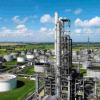|
|
Heat Flux Calculation
#1

Posted 23 September 2010 - 06:45 AM
Heat Flux is vectorial calculation and based on empirical experience, can any one explain it with some equation and examples?
Thanks
Toor
#2

Posted 23 September 2010 - 08:53 AM
Toor:
Your query seems a bit confusing. Why do you start your question by making an asserted statement and definition? The basic problem in answering your query is in accepting your assertion because I believe it is wrong. Here are my definitions of some words you employ:
Flux: a quantity expressing the strength of a field of force in a given area;
Vectorial: a quantity possessing both magnitude and direction, represented by an arrow the direction of which indicates the direction of the quantity and the length of which is proportional to the magnitude.
Empirical: derived from or guided by experience or experiment.
The heat flux that I am accustomed to is a term used as a measure of the heat concentrated on a specific area – as the heat transferred through a given reboiler tube bundle surface area. It is a value that is used to determine if there is a possibility of obtaining nucleate boiling or “vapor binding”. Nucleate boiling is desirable because of its efficiency, whereas vapor binding is not because it arrests and hinders efficient heat transfer.
The calculation of heat flux is not “empirical”. It is actual and carried out as a conventional calculation based on calculating the heat transfer rate expected and the existing heat transfer area it has to traverse. The quality of a vector on heat flux is not a requirement in its calculation. Only the magnitude is of interest; the direction of the heat flow is known to take place from hot to cold.
The heat flux in a heat transfer operation – such as for a reboiler – is calculated by dividing the expected heat transfer rate (i.e., btu/hr) by the tube bundle heat transfer area (i.e., ft2). The “empirical” part of dealing with heat fluxes is where we know – by experience – that beyond a certain heat flux value, vapor binding and/or fluid heat degradation either starts or accelerates. That is why operators often cite or specify a maximum allowable heat flux in some of their heat transfer equipment.
That has been my understanding and employment of the term “heat flux” in the past. Is that yours? Perhaps I am wrong.
#3

Posted 23 September 2010 - 08:56 AM
#4

Posted 24 September 2010 - 06:42 AM
Let you consider the example attached : transfer of energy thtough a wall (conduction)
http://www.wlv.com/p...abook/ch1_1.pdf
Hope this helps
Breizh
#5

Posted 25 September 2010 - 03:29 AM
Toor:
Your query seems a bit confusing. Why do you start your question by making an asserted statement and definition? I want to know more in detail. The basic problem in answering your query is in accepting your assertion because I believe it is wrong. Here are my definitions of some words you employ:
Flux: a quantity expressing the strength of a field of force in a given area;
Vectorial: a quantity possessing both magnitude and direction, represented by an arrow the direction of which indicates the direction of the quantity and the length of which is proportional to the magnitude.
Empirical: derived from or guided by experience or experiment.
The heat flux that I am accustomed to is a term used as a measure of the heat concentrated on a specific area – as the heat transferred through a given reboiler tube bundle surface area. It is a value that is used to determine if there is a possibility of obtaining nucleate boiling or “vapor binding”. Nucleate boiling is desirable because of its efficiency, whereas vapor binding is not because it arrests and hinders efficient heat transfer.
The calculation of heat flux is not “empirical”. It is actual and carried out as a conventional calculation based on calculating the heat transfer rate expected and the existing heat transfer area it has to traverse. The quality of a vector on heat flux is not a requirement in its calculation. Only the magnitude is of interest; the direction of the heat flow is known to take place from hot to cold.
The heat flux in a heat transfer operation – such as for a reboiler – is calculated by dividing the expected heat transfer rate (i.e., btu/hr) by the tube bundle heat transfer area (i.e., ft2). The “empirical” part of dealing with heat fluxes is where we know – by experience – that beyond a certain heat flux value, vapor binding and/or fluid heat degradation either starts or accelerates. That is why operators often cite or specify a maximum allowable heat flux in some of their heat transfer equipment.
That has been my understanding and employment of the term “heat flux” in the past. Is that yours? Perhaps I am wrong. No, i posted 1st time.
thank you for explanation and splendid information.
Toor
Similar Topics
Relief Path To Be Considered For Inlet Pressure Drop CalculationStarted by Guest_Ascanio E._* , Today, 03:02 AM |
|

|
||
Nozzle Sizing CalculationStarted by Guest_BabRafiq1_* , 26 Aug 2022 |
|

|
||
Steam Pressure In Heat ExchangerStarted by Guest_mvanrijnbach_* , 15 Apr 2025 |
|

|
||
Heat Exchanger Steam FlowStarted by Guest_aliebrahem17_* , 25 Nov 2024 |
|

|
||
Discussion - Predict Storage Tank Heat Transfer Precisely By Jimmy D KStarted by Guest_raj shekhar_* , 25 Mar 2025 |
|

|

 FB
FB









